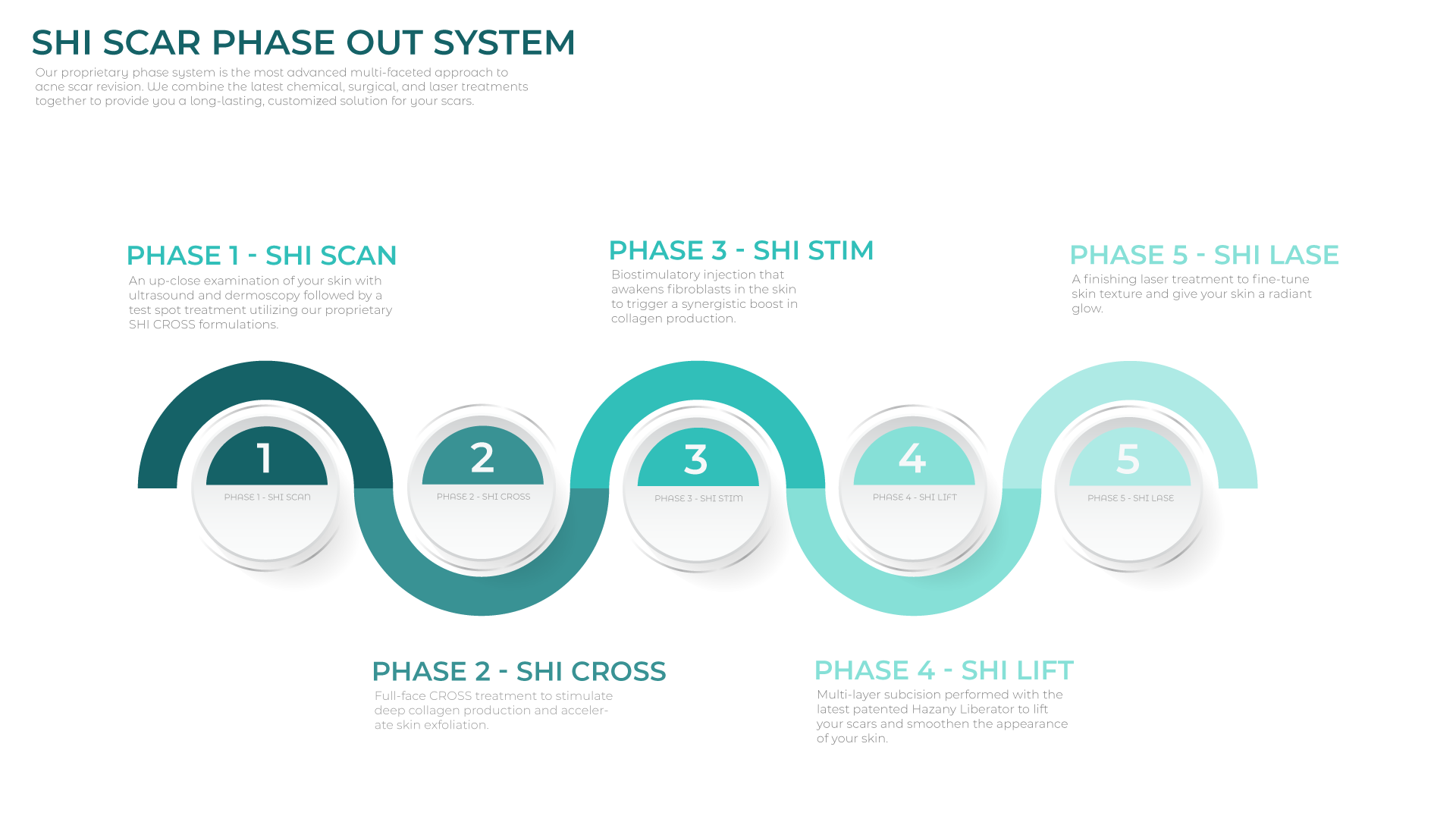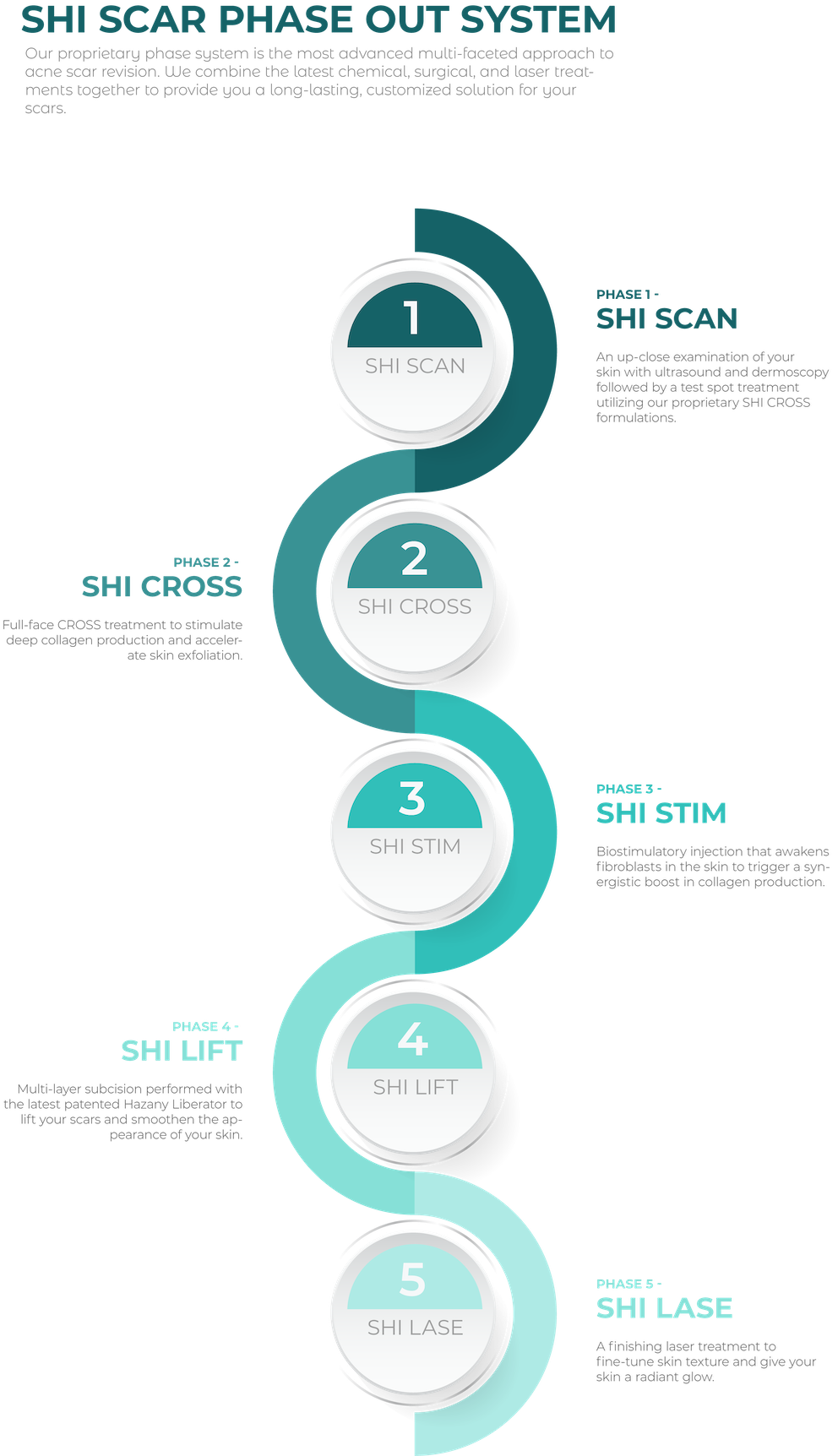Are chemical peels effective for treating scars? Whether you’re dealing with acne-induced marks or seeking to improve skin texture, a chemical peel for scars offers a range of solutions. This article examines the types and effectiveness of peels suitable for various scars, giving you a clear roadmap for your skin’s rejuvenation.
Key Takeaways on Chemical Peel Treatments
Understanding The Benefits of Chemical Peels
A chemical peel treatment is a procedure that uses a chemical solution to remove the top layers of the skin, stimulating the growth of new, smoother skin underneath. These peels are particularly effective in reducing acne and acne scars, improving hyperpigmentation, and treating fine lines. They achieve this by stimulating collagen production and removing discolored, dead skin cells, enhancing the appearance of acne scarring and post-inflammatory hyperpigmentation.
There are different types of chemical peels – light, medium, and deep peels – each with varying penetration depths and tailored to treat specific kinds of acne scars. Deep chemical peels, for instance, incorporate special techniques like Chemical Reconstruction of Skin Scars (CROSS) to effectively reduce severe acne scars.
Types of Skin Scars Treated with Chemical Peels
Chemical peels have shown to be effective in improving a variety of acne scars, including rolling, boxcar, and ice pick scars. Various peels, including glycolic acid, phenol, TCA, and Jessner’s peel, can be customized to address these specific scars.
Icepick Scars
Ice pick scars, which are narrow and deep, can be best addressed with the CROSS technique. This specialized treatment promotes collagen and elastin production, leading to skin regeneration and a reduction in the appearance of these deep scars.
For optimal results, a series of 3 to 5 CROSS treatments, spaced 6-8 weeks apart, is recommended. This regimen encourages the regeneration of key skin components like collagen and elastin, which are essential for repairing the deep tissue loss caused by ice pick scars.
Boxcar Scars
Boxcar acne scars, on the other hand, are marked by sharp, well-defined edges and a box-like appearance. For these types of scars, deep chemical peels such as phenol and high-concentration TCA are particularly effective. These CROSS treatments resurface the deeper layers of the skin, making them more suitable for the pronounced edges of boxcar scars.
Customizing the depth and concentration of the peel to suit the individual’s skin response and scar depth is key for optimal results.
Rolling Scars
Rolling acne scars, a type of atrophic acne scars, are characterized by their gentle and sloping edges that give the skin a wavy appearance. They can effectively be treated with medium-depth peels like TCA 35%. These peels penetrate the skin’s surface and produce controlled injury that promotes collagen remodeling, making it a suitable treatment option.
The application of TCA 35% can significantly enhance skin texture and reduce the depth of rolling scars. For even more effective treatment, deep chemical peels using specialized techniques such as CROSS can be utilized.
The precision and effectiveness of CROSS make it an attractive option for individuals seeking to diminish these types of acne scars and regain smooth, clear skin.
Chemicals Peels vs. CROSS
While traditional chemical peels are effective for treating acne scars, CROSS is a specialized technique that offers more precision. The name “CROSS” stands for Chemical Reconstruction of Skin Scars, and it involves the application of a much stronger concentration of an acid directly into the scars.
This technique can be classified as a ‘deep’ chemical peel due to its use of potent chemicals like phenol. However, the high concentration of acid in CROSS provides a more targeted treatment, avoiding damage to the healthy skin surrounding the scars.
Selecting the Right Chemical Peel for Your Skin Type
The selection of the appropriate chemical peel, a pivotal step in the treatment process, should consider factors such as skin type, skin tone, and specific skin concerns. For instance, if you have sensitive skin, superficial peels that provide gentle exfoliation and hydration, such as enzyme peels derived from fruits like papaya or lactic acid peels, are recommended.
On the other hand, for darker skin tones, glycolic acid peels can be used safely but with caution to minimize risks of transient post-inflammatory hyperpigmentation due to the increased melanocyte activity.
The Chemical Peel Process: What to Expect
Chemical peels are classified into three depth levels: light, medium, and deep. Each level denotes the intensity of the treatment, which commences with skin cleansing and patient preparation for the chemical solution application. During the peel, solutions such as glycolic or salicylic acid for light peels, trichloroacetic acid with glycolic acid for medium peels, and carbolic acid for deep peels, are applied, causing immediate skin responses such as whitening and stinging.
After the treatment, peeling typically occurs from 7 to 10 days, starting around the areas of the nose and mouth. Side effects such as redness, tightness, and swelling can be managed by recommended treatments like hydrocortisone for inflammation. And remember, proper SPF protection is a must throughout the chemical peel process to prevent further sun damage to the newly exposed skin layers.
Preparing Your Skin for a Chemical Peel
Successful chemical peeling hinges on proper preparation. You should avoid using retinoids and acids such as salicylic or glycolic acid prior to a peel to prevent skin sensitivity. Moreover, exfoliation should be avoided for at least one week before a peel to prevent damaging the skin.
On the day of the peel, make sure to:
- Ensure your skin is well-hydrated
- Avoid drying skincare products a few days before treatment
- Prime the skin with depigmenting agents before the peel to enhance its effectiveness and decrease the risk of post-inflammatory hyperpigmentation (PIH).
Can Chemical Peels Help with Cystic Acne and Acne Scarring?
Chemical peels are not only potent for treating acne scars but also beneficial in managing cystic acne. They promote exfoliation and enable deeper penetration into the skin to tackle the root causes of this severe acne type. They can:
- Alleviate active acne breakouts
- Diminish the appearance of acne scars
- Promote skin cell turnover
- Improve skin texture
However, it’s important to note that a temporary increase in acne, known as a ‘purge’ period, may occur post-treatment but typically resolves swiftly, especially for those with acne prone skin. In some cases, acne recurrences can last up to several weeks. To effectively treat acne and acne scars, a series of peel sessions might be required, combined with tailored skincare products.
Pre-Treatment Consultation
During the pre-treatment consultation, a thorough assessment of the patient’s medical history, current medications, and skin type is conducted. Priming the skin with a protocol of sunscreen and hydroquinone-containing cream prior to the CROSS helps minimize the risk of post-inflammatory hyperpigmentation, especially in patients with darker skin.
Before undergoing CROSS, patients should be screened for any allergies and sensitivities to the chemical peel components to avoid adverse reactions. A formal evaluation with a dermatologist is crucial to analyze the scars, develop a tailored treatment plan, and obtain informed consent prior to starting the CROSS procedure.
During the Procedure
During the procedure, coagulation of epidermal and dermal proteins is monitored through a frosty appearance on each treated atrophic scar. This indicates the proper application and start of the healing response. To preserve normal tissue, a precision applicator is recommended to prevent the spread of acid to adjacent healthy skin.
The procedure is usually comfortable for patients, and most do not require anesthesia as the sensation is similar to a tiny sting. The CROSS treatment typically takes 30-60 minutes, which can vary depending on the number of scars being treated.
Post-Peel Care and Maintaining Results
Once the chemical peel process is complete, proper aftercare is critical to maintain the results. Use a gentle cleanser and apply it with your fingertips when washing your face post-peel to avoid irritation. Also, moisturize your skin frequently with non-comedogenic products to support the healing process.
Additionally, protecting the new skin from sun exposure is crucial. Use broad-spectrum physical sunblocks and wear protective clothing during the recovery period.
Lastly, avoid using products containing retinoids, acne medications, and exfoliants for a minimum of 2 weeks after the peel to prevent skin irritation.
How Many Chemical Peels Are Needed to See Results?
The number of chemical peel sessions required to see results varies based on the severity of the acne scars and the type of peel used. Generally, four to six sessions are necessary to treat acne scars effectively.
For best results in treating acne and acne scars, a series of 3 to 6 peels is recommended, with treatments typically spaced three to four weeks apart, tailored to the individual’s skin response.
Risks and Considerations When Choosing Chemical Peels for Scars
Despite the promising results of chemical peels in scar treatment, awareness of the accompanying risks is essential. People with darker skin tones have a higher risk of experiencing skin discoloration and further scarring from chemical peels.
During the healing process, chemical peels can cause:
- Inflammation that may lead to hyperpigmentation, especially in individuals with darker skin
- Increased risks, especially with stronger and deeper peels
- Longer recovery time required
Alternative Treatments for Scars Beyond Chemical Peels
Apart from chemical peels, various alternative scar treatments are also available. Laser resurfacing treatments can explicitly target thick scar tissue, and can be effectively used to improve different types of scars including atrophic scars, hypertrophic, and keloid scars.
Another alternative is microneedling, which has been shown to be a positive treatment method for addressing icepick and rolling acne scars. And then there are injectable options like steroids or botulinum toxin that can aid in reducing inflammation and redness in hypertrophic and keloid scars.
Long Term Results
Improvements in acne scars from CROSS, TCA CROSS, or phenol CROSS are typically seen within 2-9 months, with peak collagen stimulation and subsequent scar improvement usually observed about 6 to 9 months after each treatment session. Patients are typically followed up at intervals of two months after the last treatment to assess the long-term results and any delayed side effects.
It’s important to note that individual outcomes may vary and not all patients will experience progressive improvement.
Chemical Peels vs. Other Acne Scar Treatments: A Comparative Analysis
When comparing chemical peels with other acne scar treatments, it’s worth noting that lasers are generally considered more reliable. Lasers target scars more precisely and have shorter recovery times than chemical peels.
Furthermore, microneedling has been identified as a more effective option than glycolic acid chemical peels for acne scar treatment. This shows that while chemical peels are valuable in their own right, other treatments may offer more targeted and efficient results in certain cases.
Personalizing Your Scar Treatment Plan with a Dermatologist
Considering the range of available treatments, consulting a dermatologist for a personalized scar treatment plan can be beneficial. Dermatologists bring specialized expertise in skin health and can provide individualized care tailored to your specific concerns and aesthetic objectives.
They can design treatment plans customized to the nuances of each individual’s acne scars, ensuring the most effective results with acne scars chemical peels. So, don’t hesitate to seek professional advice when considering chemical peels for acne scars.
Our Proprietary Acne Scar Treatments
Meet The Acne Scar Phase-Out System
Our proprietary phase system is specifically designed to attack acne scars from all angles: chemical reconstruction from the top-down and physical reconstruction from the bottom-up and from the side. We pride ourselves in our meticulous, personalized, and longitudinal approach to treating your scars.


Skin Acne Treatments & Procedures
While our proprietary phase system is highly customizable and flexible for patients, we recognize that patients may benefit from other procedures as well. Explore these treatment options below and see if they may be right for you!
How Can I Prevent Future Scarring from Happening?
Scarring is more common with poorly resolved cystic or nodular acne. In addition, it has an even greater likelihood of occurring when irritated or squeezed. Therefore, the first step to prevent scarring is to simply leave your acne lesions alone. It is difficult at first, but is worth the patience at the end.
At the same time, it is also important to ensure that your acne lesions do not become over-inflamed. The prolonged inflammation of your active acne will also increase scarring. Steroid injections, notably kenalog injections, are highly effective in quelling inflammation of your acne and thereby limit scarring.
How Do I Know What Type of Acne Scar I Have?
Our specialists at Scar Healing Institute can help identify your acne scar or scarring. We will work with you to create a plan that will help you achieve both mental and physical healing. Find out more!
If you are concerned that you may have acne scars, it is important to consult with a dermatologist or other skin care professional. Our dermatologists will be able to assess your skin and determine if you have any scarring.
Summary
In summary, chemical peels offer a promising treatment option for acne scars. They work by removing the top layers of skin, promoting collagen production, and improving skin texture. While they’re effective on their own, they can also be combined with other treatments for more comprehensive results. However, it’s crucial to select the right type of peel based on your skin type and concerns, and to have a good understanding of the process, risks, and aftercare involved. Consulting with a dermatologist can provide personalized guidance to ensure the best possible outcome.
The recovery time for a chemical peel varies based on the depth of the peel, but peeling usually occurs within 7 to 10 days.
You will typically need one to four sessions of chemical peels to effectively treat acne scars.
Yes, chemical peels can effectively aid in treating cystic acne by promoting exfoliation and addressing the root causes of this severe acne type.
The results vary on the type of chemical peels used and the type of scarring you have. Deep chemical peels such as CROSS are used as part of our Phase System treatment.
While chemical peels can help reduce the appearance of acne scars, they cannot remove scars altogether. It’s important to manage expectations as no cosmetic treatment can completely eliminate scars.

